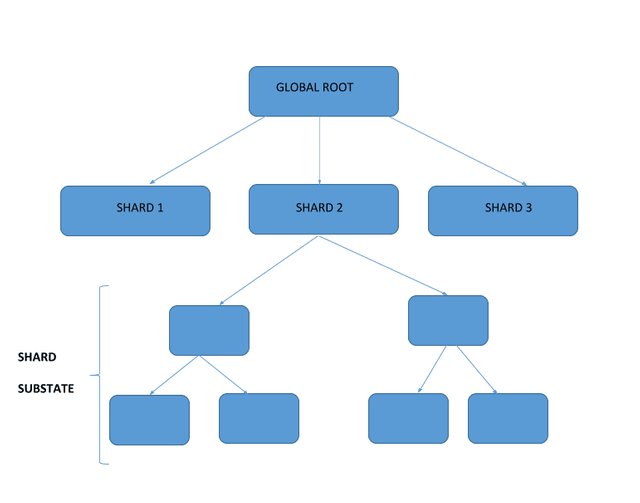Ethereum Casper Update - 80% Complete!
Ethereum Casper Update
Summary
- The amount needed to become a validator on the network (staking your ETH as nodes) has decreased from the rumored 1000 ETH to 32 ETH
- Casper & sharding uses full Proof of Stake (PoS) chain based on a RANDAO beacon
- The Beacon Chain is the “main chain” of the PoS system
- Cross-links are used to verify transactions from randomly selected shards on the PoS system
- Casper is 80% complete

A Full Casper Chain
Ethereum is facing a conundrum between decentralization and scaling. How do you keep the network decentralized while still being efficient with its scaling solutions. Enter Casper & Sharding. Casper is a scaling solution that mimics the main Ethereum Network chain, but is instead of PoW, it uses full Proof of Stake chain based on a RANDAO beacon. There is a central PoS chain which stores and manages the current set of active PoS validators. The beacon chain is the “main chain” of the PoS system.
The beacon chain’s main responsibilities are:
- Store and maintain the set of active, queued and exited validators
- Process cross-links
- Process it’s own block-by-block consensus, as well as the FFG finality gadget
How to Become a Validator?
The only mechanism available to become a validator initially is to send a transaction on the existing PoW main chain containing 32 ETH. When the transaction is sent and processed on the PoS chain, you will be queued and eventually inducted as an active validator until you voluntarily log out or kicked out as a penalty for misbehavior.

Initial estimates though users required 1000 ETH to become a validator. This is good news, because a lower ETH requirement means more validators and better decentralization. Staking pools will still exist, but now becoming a validator is even more feasible for the everyday user!
With one validator per 32 ETH, we can look at three cases:
- 31,250 validators (1M ETH), minimal case
- 312,500 validators (10M ETH), average case
- 4,000,000 validators (assuming 128M ETH as a supply cap), worse case: literally everyone stakes
How Will Casper & Sharding Work?
Sharding can be thought of as splitting up a big task into multiple nodes to get a task done quicker. Suppose there are three nodes-- A, B, and C, and they have to verify data T (a transaction or call to retrieve data). Instead of A, B, and C all verifying the data T individually, the task of data T will be broken into 3 shards: T1, T2, & T3. After that, A, B, and C will verify one shard each side-by-side. The task was split into 3 parts and collectively verified, thus saving a lot of time.

As a validator on a PoS chain, you in turn act as the node that transactions and actions are verified on. Casper verifies transactions on the PoS chain using cross-links. A cross-link is a special type of transactions that reads signatures from validators randomly selected from sharding. When at least ⅔ of the randomly selected sample of validators attest to the validity of the cross-links, the transaction will go through.
Every shard itself is a PoS chain (external to the main beacon chain), and the shard chains are where the transactions and accounts will be stored. The cross-links serve to “confirm” segments of the shard chain into the main chain, and are also the primary way through which the different shards will be able to talk to each other. Currently, the number of shards is set to 1024.
Casper 80% Complete
With Casper now at 80% complete according to the most recent Ethereum Dev meeting, it is exciting to see progress come to fruition.
The main sections missing are:
- Logic for the formats of shard chains, who proposes shard blocks, etc (in an initial release, if desired we could make cross-links just be Merkle roots of blobs of data; in any case, one can philosophically view the whole point of the shard chains as being a coordination device for choosing what blobs of data to propose as crosslinks)
- Logic for inducting queued validators from the main chain
- Penalties for signing or attesting to non-canonical-chain blocks (May not be necessary)
- Slashing conditions, minimal conditions to make 51% attacks extremely expensive
- Logic for withdrawing deposits to shards
- Per-validator proofs of custody
When Proof of Stake becomes fully implemented, the Ethereum network will slowly transition over from its original Proof of Work chain. This will help decentralize Ethereum further and also give miner rewards to anyone who chooses to stake and become a validator themself.
Link to Official Notes
Cheers,
The Blockchain Musketeers
Follow Us!
Facebook
Instagram
Twitter
Youtube
Referral Links
Free $10 - Coinbase
50% off fees - Binance
Disclaimer: The information provided by the Blockchain Musketeers is our own opinions and should not be taken as investment advice, financial advice, or any other sort of advice. Nor should this information be used to determine if you should buy, sell, or hold a cryptocurrency. Please conduct your own due diligence and consult your financial advisory before making any investment decisions. Only invest money which you are willing to lose, as cryptocurrencies is not suitable for all users.
Congratulations @bchainmusketeers! You have completed some achievement on Steemit and have been rewarded with new badge(s) :
Click on the badge to view your Board of Honor.
If you no longer want to receive notifications, reply to this comment with the word
STOPDo not miss the last post from @steemitboard!
Participate in the SteemitBoard World Cup Contest!
Collect World Cup badges and win free SBD
Support the Gold Sponsors of the contest: @good-karma and @lukestokes